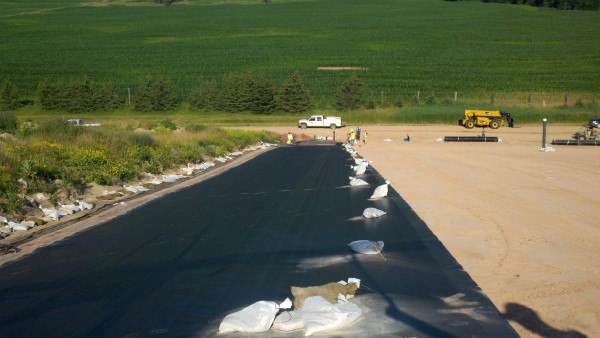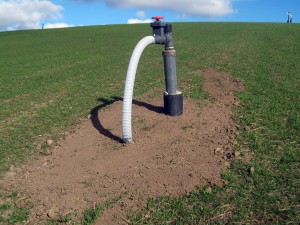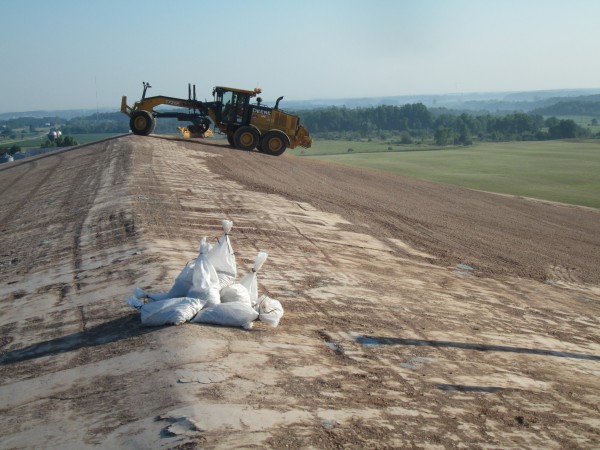Landfill-ed to the Brim — Now What?
 You put your garbage at the curb, and by the time you come home, it’s been whisked away to a landfill somewhere nearby. Your neighbors are all doing the same thing – so what happens when all that trash adds up?
You put your garbage at the curb, and by the time you come home, it’s been whisked away to a landfill somewhere nearby. Your neighbors are all doing the same thing – so what happens when all that trash adds up?
Very few landfills are officially closed. Instead, older portions are capped once areas reach the design top of waste. (The photos at top and bottom show capping in progress at the Kewaunee County, Wisconsin, landfill.) Capping reduces leachate (rain and snowmelt that must be treated at a wastewater plant), helps collect and control gas and odors, and may even reduce the amount of financial assurance money set aside for final closure activities. Once a landfill gets close to full, the owners often begin a landfill expansion permitting process.
Increasing landfill capacity is easier and much more cost-effective than finding another site and creating a new landfill, and many existing landfills in operation today have significant buffer areas to expand into without much impact to neighbors.
But what happens when a landfill has been filled to absolute capacity, with no room for expansion?
 A landfill will always be a landfill, but it can have new life as long as it is left as open space. Most modern landfills are steep and have gas wells sticking out of the cap (like the one shown at right from the Mar-Oco Landfill near Marinette, Wisconsin), so they are often replanted with native grasses to create an ecology park, and some people are proposing to build solar arrays on or around them. Older landfills with flatter slopes can even be repurposed for sporting venues, such as soccer fields.
A landfill will always be a landfill, but it can have new life as long as it is left as open space. Most modern landfills are steep and have gas wells sticking out of the cap (like the one shown at right from the Mar-Oco Landfill near Marinette, Wisconsin), so they are often replanted with native grasses to create an ecology park, and some people are proposing to build solar arrays on or around them. Older landfills with flatter slopes can even be repurposed for sporting venues, such as soccer fields.
And even with the landfill completely closed and possibly repurposed, the owner is still responsible and must perform environmental monitoring to ensure that the landfill is not releasing leachate or gas into the environment, operate the gas control system, perform general maintenance like grass mowing and erosion repair, and complete regulatory agency status reports.
For more about Ayres Associates’ solid waste and other environmental engineering services, click here.

Post a comment: